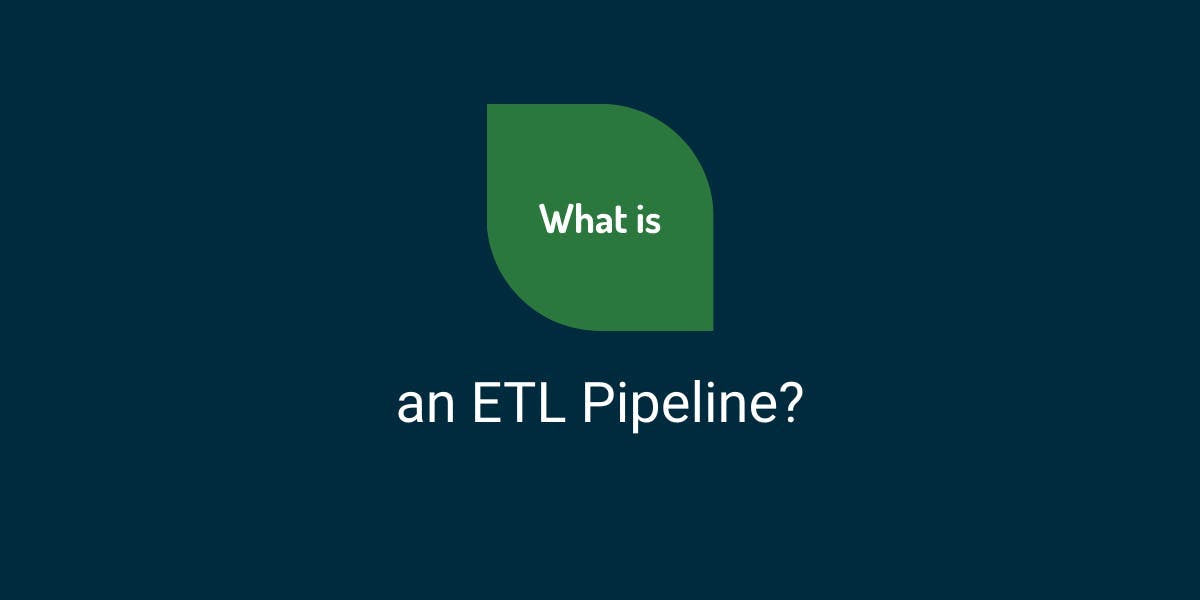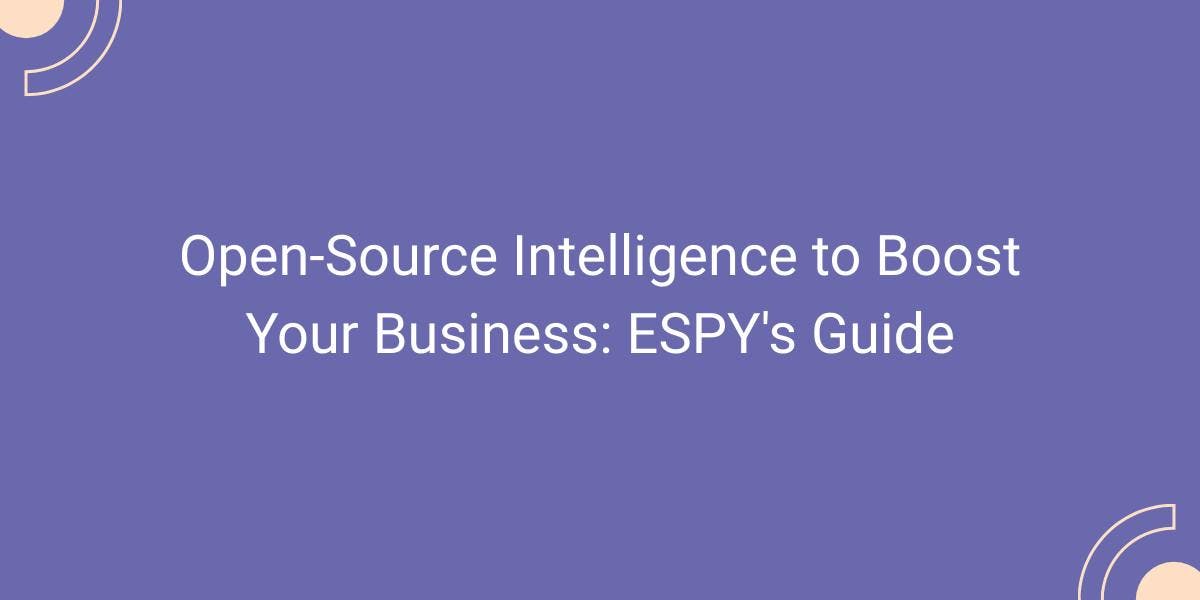What Is an ETL Pipeline?
Flipnode on May 05 2023

ETL, which refers to extracting, transforming, and loading, is a three-stage process that moves data from one or multiple sources to a database. Once the data is processed through these stages, it becomes available for various purposes, such as reporting, analysis, and more.
This blog post covers multiple essential topics, including the advantages and characteristics of an ETL pipeline, how it contrasts with a data pipeline, and a brief overview of building an ETL pipeline using Python.
What is an ETL pipeline?
It is no surprise that the process of preparing, consolidating, modifying, and adjusting data for analytics and business intelligence yields various benefits. Some of the key advantages and use cases include:
- Standardizing and centralizing data to enhance its readability and accessibility for analysts and decision-makers.
- Streamlining data migration to simplify the transfer of data from legacy systems to data warehouses.
- Allowing developers to focus on other tasks beyond data maintenance or migration-related duties.
- Enriching your CRM system with additional data using ETL pipelines.
To gain a better understanding of the benefits mentioned above, let us analyze the ETL pipeline step-by-step.
Extract
Extraction in the ETL pipeline refers to the process of gathering useful data from various heterogeneous data sources. The level of complexity involved in data extraction depends on the complexity of the data source. As a result, there is no standardized approach for this stage of the pipeline. However, two common methods are Incremental extraction and Full extraction.
- Incremental extraction involves extracting only relevant data, which reduces the load on the system. However, this approach requires specific metrics to be defined, which can be complex.
- Full extraction involves extracting all data from the source without modifying the logic or conditions in the source system. This method does not require extensive knowledge to initiate but can result in a significant system load if a large amount of data is extracted.
Transform
The second stage of the ETL process involves transforming the extracted raw data into a format that is easily readable by various applications. This stage can be further divided into three parts: data cleansing, mapping, and transformation, which prepare the data for operational needs.
Data cleansing is arguably the most crucial part of this stage, as it ensures that only relevant data is selected. However, this process can become challenging when different systems interact, and communication between them becomes necessary. For example, certain character sets available on one system may not be available on others.
In addition, an essential aspect of the transformation stage is the ability to detect and resolve data issues. It's crucial to address these issues during this stage since doing so after the data has been loaded becomes significantly more complex.
Load
In the load phase, the transformed data is inserted into a target database or data warehouse. It's important to note that this process can differ significantly based on a company's requirements. For instance, certain data warehouses may prefer to replace their existing data with incremental updates, which are extracted on a daily, weekly, or monthly basis. In some cases, intervals can even be accelerated to an hourly basis to allow for more frequent data additions.
Benefits of an ETL pipeline
A well-designed ETL pipeline should aim to provide value through analytics. To achieve this, the following criteria should be met:
- Ensure information clarity. The ETL transformation process should convert raw data into easily understandable and structured data for analysis. By doing so, the ETL process provides clarity from otherwise unstructured data.
- Ensure data quality. To draw trustworthy conclusions, the ETL process should discard unnecessary data and only use reliable and relevant sources for analysis.
- Ensure information completeness. An efficient ETL pipeline should integrate all necessary business sources into a single location, such as a data warehouse, for analysis.
A well-engineered ETL pipeline should also possess a high data velocity, where the pipeline is triggered as soon as new data arrives in the sources. This ensures that outdated data is not used for analysis or decision-making.
Challenges of an ETL pipeline
Although the benefits of a real-time ETL pipeline are attractive, building one is far from simple. There are core difficulties, such as slow creation speeds, numerous code complexities, and limited reusability. These challenges can become even more pronounced in a constantly changing environment, requiring data engineers to effectively reinvent the pipeline each time.
ETL pipeline issues go beyond a problematic start. As these pipelines become increasingly complex, their efficiency and accuracy decrease, allowing poor data to slip through the cracks. Inaccurate data sets can provide false conclusions, defeating the entire purpose of building an ETL pipeline. Therefore, data-focused firms must continuously monitor, repair, and update their pipelines, even if that results in significantly increasing the load on operations management.
ETL pipeline vs. Data pipeline
While ETL and data pipelines are sometimes used interchangeably, they are not the same thing. Data pipeline is a more general term that encompasses ETL pipelines. To better understand their differences, here are some key features of each:
ETL pipeline:
- Data transformation is a crucial component of the ETL process.
- The end goal of the ETL process is always to transfer data to a database or data warehouse.
- ETL pipelines typically move data in batches on a scheduled basis.
- Orchestration tools like Airflow or Dagster are commonly used to track the entire ETL process.
Data pipeline:
- Data may or may not be transformed after the load step.
- In some data pipelines, the load step is not the end; it may activate other processes.
- Modern data pipelines can run real-time processes.
- Orchestration tools are not always necessary.
How to build an ETL pipeline with Python
Python, SQL, and Spark are the top choices for building an ETL pipeline. However, this post will concentrate on Python, which has several significant advantages, including the Pandas library (employed in the transform stage). The combination of Pandas and Python makes ETL processes, particularly the extract and transform steps, more manageable.
In this section, we'll briefly go over the steps and processes involved in building an ETL pipeline using Python.
- Create reference data - this step is not technically necessary, but it's considered good practice. Reference data contains all possible values based on static references and is useful in the transformation stage.
- Connectors and data standardization - connectors or dedicated tools are needed for data extraction, and once collected, the data must be converted to a format that's ready for processing. Fortunately, Python offers many open-source connectors that make this step easier.
- Data validation - ensure that the extracted data matches the expected range and discard any data that doesn't.
- Data transformation - after validation, the data must go through a series of steps, including duplicate removals, cleansing, further standardization, integrity checks, and aggregations.
- Staging - before loading, the transformed data is stored in this layer to allow for easy rollback in case something goes wrong. Audit reports are generated during this step to provide analysis and diagnosis.
- Loading data into a warehouse - the staged data is then moved to the target data warehouse, where existing information may be overwritten.
- Scheduling - this is arguably the most critical step. Based on your needs, you can set a schedule ranging from daily to weekly, monthly, or even according to your personal preference
Conclusion
Building and maintaining an ETL pipeline can be a complex and time-consuming process. However, it's a crucial necessity for many businesses to draw analytical conclusions.
In this article, we have provided valuable information about the ETL pipeline, including the challenges and issues that arise, the core processes involved, and the significant benefits it offers.



